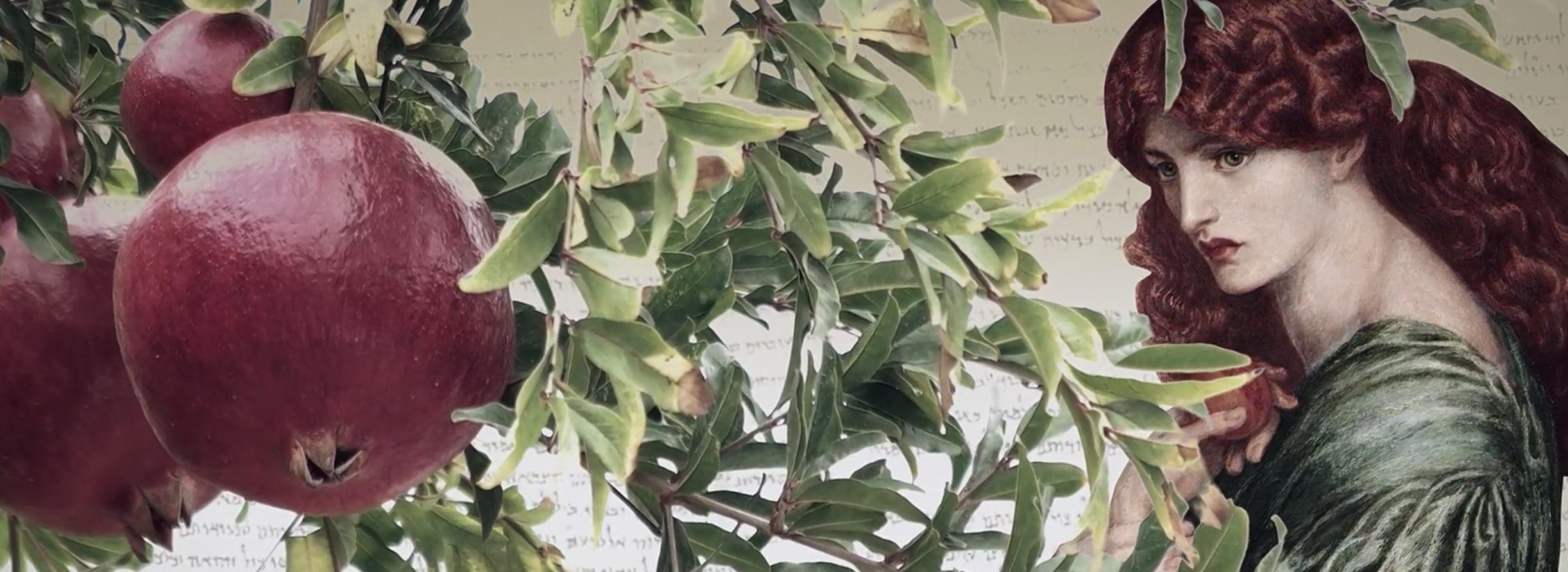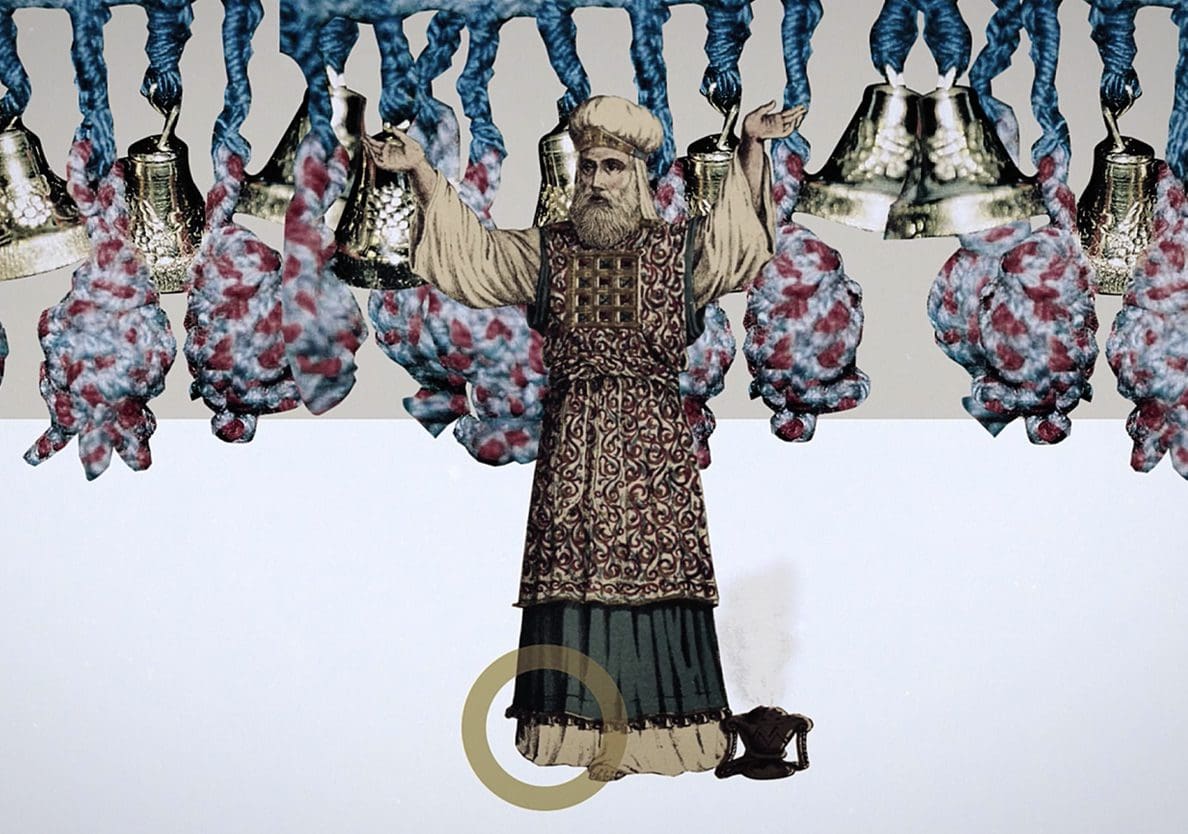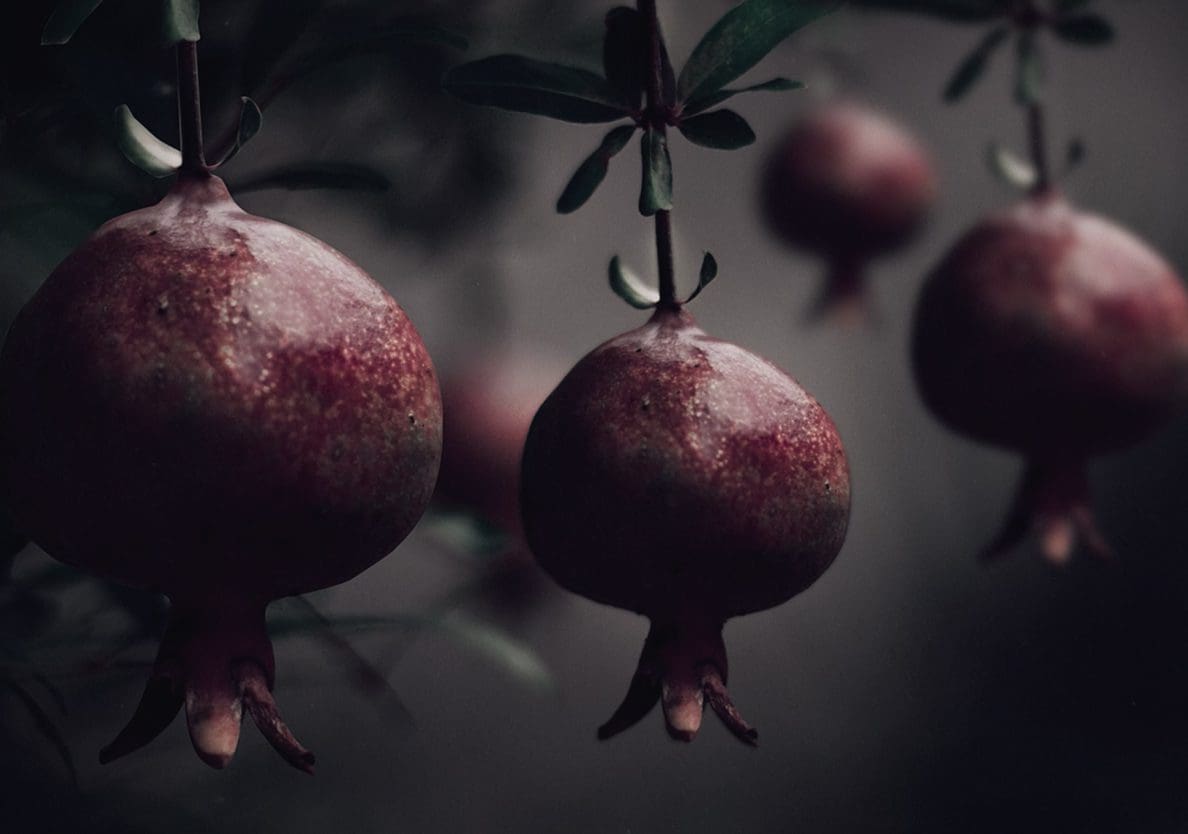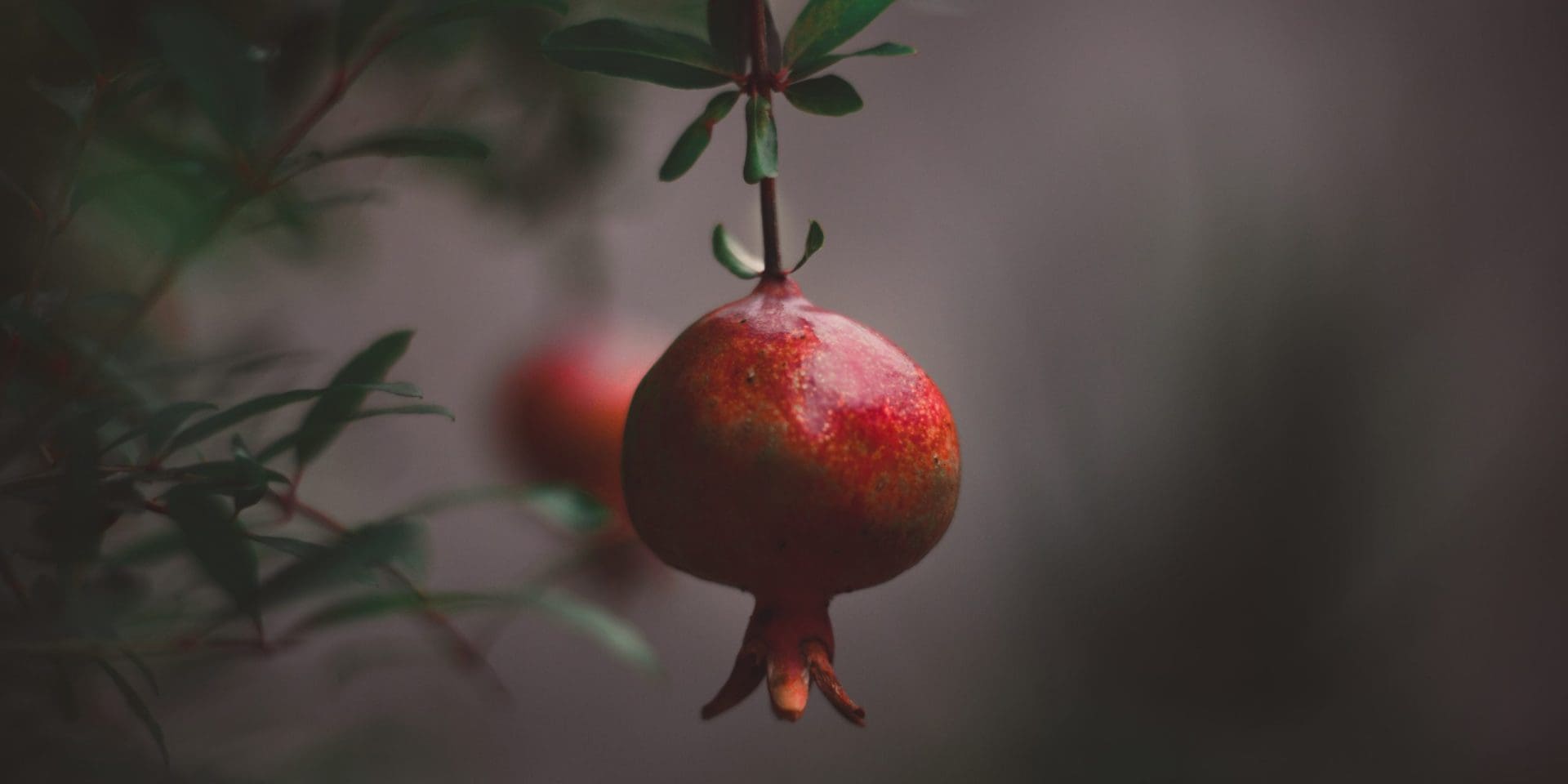In the ancient Near East, the pomegranate was a widely accepted symbol of fertility. This was due to the many seeds contained in each fruit; the pomegranate’s potential for reproducing seems nearly unlimited. So, standing as a symbol for fruitful potential, productivity, and abundance was quite appropriate. It’s red, blood-like colour may have also been a consideration, as blood is vital to life.
In the Bible, the pomegranate was used as a clear symbol of abundance, potential abundance, and blessing. It appears in the list of fruits given to the Israelites to demonstrate the Promised Land’s abundance (Deut. 8:8), and the Hebrew word for pomegranate “Rimmon” is incorporated into the names of some sites mentioned in the Bible including Gath Rimmon meaning Pomegranate Winepress (Joshua 21:24) and Hadad Rimmon which may have been a place of spiritual apostasy in the plain of Megiddo (Zech. 12:11).[1]

The pomegranate was also used in Israel’s religious life. The garment of the high priest had both a functional and decorative hem that included gold bells to announce his presence in the Temple, intermingled with blue, purple, and red yarn pomegranates (Ex. 28:33-35). The bells had a functional purpose, while the pomegranates must have had a decorative and symbolic purpose.[2] Perhaps representing the many blessings of God that came with worshipping Him as He had prescribed.
Later in Israel’s history, the Temple of Solomon also incorporated pomegranate imagery, this time as a decorative element of the building itself. Many bronze pomegranates are said to have decorated the capitals, or tops, of the two entry-way pillars into the Temple (1 Kgs. 7:42; 2 Kgs. 25:17; 2 Chr. 3:16).


The pomegranate as a decorative and symbolic element is well known from the archaeology of Israel and surrounding nations. A variety of pomegranate shaped objects have been found in cultic, or religious, contexts. Items like pomegranate shaped vessels or pots, pomegranates from the centre of bowls, and pomegranates from votive offering rings (kernoi (plural), kernos (singular)), and small pomegranates that were meant to hang off various vessels.[3] With the recent discovery of a clay hanging pomegranate from the Israelite religious site of Shiloh, there is now archaeological evidence that the pomegranate was an important symbol in the Philistine, Canaanite, and early Israelite religions.
It seems that pomegranates may also have been associated with women in ancient pop-culture. This can be seen in the Bible by the use of pomegranates in Song of Songs. The pomegranate’s association with abundance, fertility, and therefore beauty is used by the author to describe the beauty and attractiveness of the female character (Song 4:3; 6:7; 8:2).
This association with femininity is also seen in the historical record and has led some scholars to interpret ivory and bone sticks topped with small pomegranates as women’s pins for clothing, kohl sticks, which are ancient makeup applicators, and spindles involved in clothing production.[4]

Corie Bobechko is a daily co-host, speaker, and writer of Bible Discovery. She also hosts a YouTube channel that shows how history and archaeology prove the Bible. Her heart for seekers and skeptics has led her to seek truth and share it with others. Corie also has a Bachelor of Theology from Canada Christian College.
[1] Lopez, T., Stripling, S., Ben-Shlomo D., A Ceramic Pomegranate from Shiloh, Ariel University Press, 2019, Vol.28:1, p. 51. https://doi.org/10.26351/JSRS/28-1/7
[2] Stripling, Scott. Promised Land Pomegranates, 2019. https://biblearchaeology.org/research/topics/amazing-discoveries-in-biblical-archaeology/4449-promised-land-pomegranates
[3] Dothan, T., Ben-Shlomo, D., Ceramic Pomegranates and Their Relationship to Iron Age Cult, Institute of Archaeology, p.11. https://www.academia.edu/23721693/Ceramic_Pomegranates_and_Their_Relationship_to_Iron_Age_Cult
[4] Arie, Eran. Pomegranate and Poppy-Capsule Headings from Ivory and Bone in the Late Bronze and Iron Ages: Putting the Famous Inscribed Ivory Pomegranate in Context. Israel Museum Studies in Archaeology, Vol. 9, 2019. 3-35. https://www.academia.edu/39348015/2018_2019_Pomegranate_and_Poppy_Capsule_Headings_from_Ivory_and_Bone_in_the_Late_Bronze_and_Iron_Ages_Putting_the_Famous_Inscribed_Ivory_Pomegranate_in_Context






